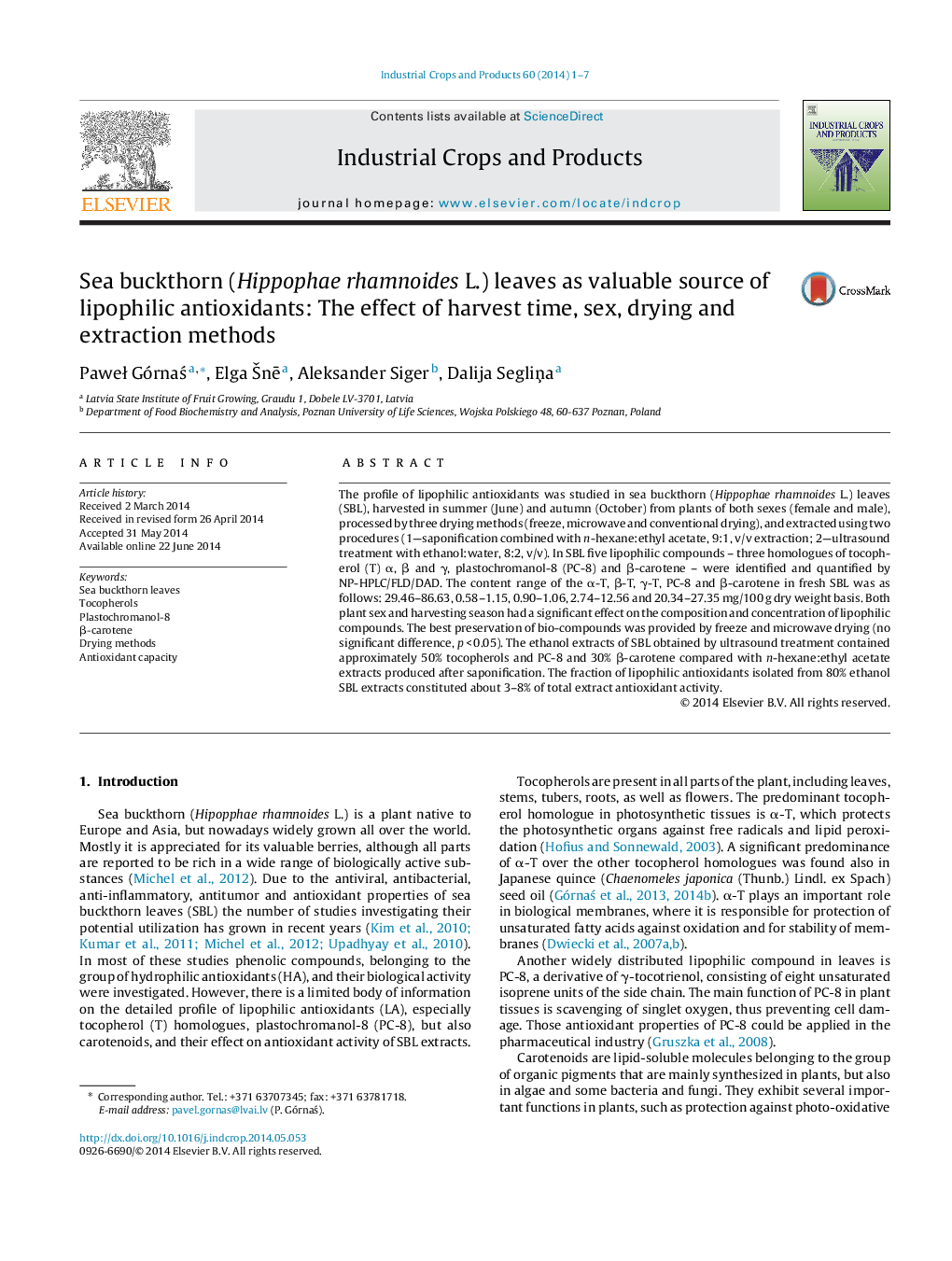| Article ID | Journal | Published Year | Pages | File Type |
|---|---|---|---|---|
| 6376293 | Industrial Crops and Products | 2014 | 7 Pages |
â¢Sea buckthorn (Hippophae rhamnoides) leaves (SBL) are a rich source of bio-compounds.â¢Î±-Tocopherol, plastochromanol-8, β-carotene-main lipophilic antioxidants (LA) of SBL.â¢Plant sex and harvest season of SBL influence the composition and content of LA.â¢Freeze and microwave drying of SBL provide a comparable preservation of LA.â¢Significant amount of LA is extracted from SBL by using 80% ethanol and ultrasounds.
The profile of lipophilic antioxidants was studied in sea buckthorn (Hippophae rhamnoides L.) leaves (SBL), harvested in summer (June) and autumn (October) from plants of both sexes (female and male), processed by three drying methods (freeze, microwave and conventional drying), and extracted using two procedures (1-saponification combined with n-hexane:ethyl acetate, 9:1, v/v extraction; 2-ultrasound treatment with ethanol:water, 8:2, v/v). In SBL five lipophilic compounds - three homologues of tocopherol (T) α, β and γ, plastochromanol-8 (PC-8) and β-carotene - were identified and quantified by NP-HPLC/FLD/DAD. The content range of the α-T, β-T, γ-T, PC-8 and β-carotene in fresh SBL was as follows: 29.46-86.63, 0.58-1.15, 0.90-1.06, 2.74-12.56 and 20.34-27.35 mg/100 g dry weight basis. Both plant sex and harvesting season had a significant effect on the composition and concentration of lipophilic compounds. The best preservation of bio-compounds was provided by freeze and microwave drying (no significant difference, p < 0.05). The ethanol extracts of SBL obtained by ultrasound treatment contained approximately 50% tocopherols and PC-8 and 30% β-carotene compared with n-hexane:ethyl acetate extracts produced after saponification. The fraction of lipophilic antioxidants isolated from 80% ethanol SBL extracts constituted about 3-8% of total extract antioxidant activity.
Graphical abstractDownload full-size image
